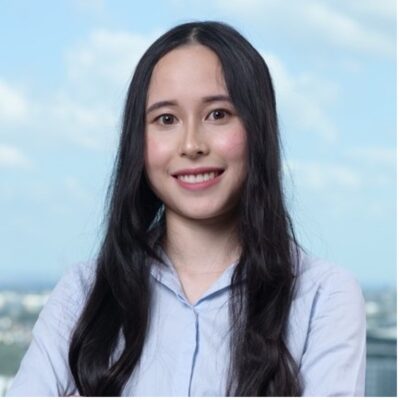
From Classroom to Consulting
Recent developments in superannuation and retirement income legislation are expected to provide plenty of opportunities for aspiring actuaries to shape the future of the Australian superannuation system and make positive impacts on retirement for various different generations.
The Superannuation and Retirement Applications (SRA) subject offers members the opportunity to learn about the current and potential roles for actuaries within the superannuation sector.
What does Superannuation and Retirement Applications cover?
Superannuation and Retirement Applications promotes the concept of the actuary as an expert advisor on retirement funds in the Australian environment.
The subject reviews the external environment, global longevity funding issues, the role of retirement funds, regulation and how government policies have a significant impact on fund operations and member outcomes.
You may be interested to know what we covered in the SRA assessments this year:
- The assignment required policy level advice to officials of a fictional government with respect to establishing new arrangements to facilitate self-funding for retirement. Students had to evaluate regulatory options and the potential for conflicts of interest. A written report, model and short video presentation were submitted.
- The exam questions covered:
- the work of a consulting actuary for defined contribution funds, including unit pricing error rectification, professional responsibilities, and sources of capital to meet regulatory fines imposed on RSEs;
- develop meaningful outcomes metrics for members over age 65, that address member, trustee and prudential requirements;
- assist a financial planner with communications that address assumptions, retiree income needs, income sources and risks; and
- evaluate Institute policy on retirement incomes, the value of retirement income projections and availability of data for such projections.
Practicing superannuation actuaries have been essential to the delivery of SRA.
Last semester we relied on an independent examiner, four assessment scrutineers, three markers, education faculty members and tutorial guest speakers. Those wanting to assist in 2025 should reach out to the Education team.
Shaping the next generation of superannuation actuaries: Student experiences
As a professional body, we are very excited to see more young actuaries graduating from SRA each year.
Hear from some of our successful students as they share their experiences and perspectives on the subject.
 Cynthia Le – Associate, Retirement Actuarial Consultant at Mercer Australia
Cynthia Le – Associate, Retirement Actuarial Consultant at Mercer Australia
Education and professional background
After graduating from the University of Melbourne with a Bachelor of Commerce, majoring in Actuarial Studies, I started as a graduate in PwC’s general insurance actuarial team before transitioning to the superannuation industry.
I currently work at Mercer’s Insurance in their superannuation team. My portfolio areas include independent pricing reviews, strategic insurance reviews, and benchmarking to name a few.
In my role, I am able to interact with life insurers and superannuation trustees as stakeholders, which is an aspect that I particularly enjoy.
What led you to study Superannuation and Retirement Applications?
Due to the nature of my current role, I was tossing up between the Life Insurance and Superannuation and Retirement Applications subjects to complete my fellowship. Tim Jenkins, Partner, Superannuation Consulting Leader at Mercer and Chair of the Superannuation and Investments Practice Committee (SIPC), highly recommended SRA, believing I would find the subject matter interesting. He was absolutely right!
What was the most practical or important thing you learned from the SRA subject?
Education is a widespread issue in superannuation and retirement as it can lead to poor outcomes for individuals without appropriate ‘guardrails’ in place.
Working in the insurance in super space has shed light on the fact that many members have little to no understanding. For this reason, default insurance was regulated to protect member’s best financial interests, with super funds compelled to take on an increasingly active role.
Putting aside the complexity of the Australian retirement system, I was shocked to discover in the SRA that retirees pass away with around 90 per cent of their retirement assets.[1] This highlights that many Australians may be living at a lower retirement standard than what could be achieved if their retirement assets were greater utilised. Again, intervention is required, which has given rise to regulation such as the Retirement Income Covenant.
What’s one work-life balance or study tip you’d pass on to studying actuaries?
It’s important to prepare yourself with a strong support team, especially at home. Balancing work, study, and daily living can get very intense and being able to save time by getting some assistance on non-work and non-study tasks close to the exam period really helps.
 Michelle Wilkinson – Senior Actuarial Analyst at Suncorp New Zealand
Michelle Wilkinson – Senior Actuarial Analyst at Suncorp New Zealand
Education and professional background
I studied a conjoint Commerce and Science degree at the University of Auckland, majoring in Economics, Finance, and Statistics. I ended up completing a Masters in Science, with my Masters dissertation involving modelling equity returns, interest rates and exchange rates using multivariate time series models in the context of asking the question “How much do you need to retire?”. The dissertation focussed on the technical aspects of the model, but the context made it interesting.
In my professional roles, I have primarily worked in life insurance valuation, including being responsible for the remaining Conventional Participating portfolio, but have been in several areas including non-actuarial projects. I always take pride in explaining very technical concepts to non-actuaries.
What led you to study Superannuation and Retirement Applications?
What has always fascinated me about the concept of retirement is that there’s this intersection of global forces of demography, science, technology and economics, and the very personal (and sometimes very uncomfortable) questions that we ask ourselves about our own mortality.
One reason I decided to study SRA is my fascination with how different countries approach the retirement question.
In New Zealand, the Australian super system has always been viewed with interest – and often envy. While SRA delivers the specifics of the Australian system, it also provides a wider context in how super can operate in other countries, too. For example, in our SRA assignment, we designed a superannuation product in a developing country with quite different needs.
I also decided to take SRA for career reasons as I view this field as a vibrant and interesting sector to be a part of. In particular, there has been considerable public policy development in Australia whereas there is more limited development in New Zealand.
What was the most practical or important thing you learned from the SRA subject?
That the transition to retirement is incredibly personal and confronting. Every person has unique needs and the solution should be unique to match. Another takeaway is the superannuation system should be incredibly flexible and adaptive, with compassion towards individuals with less financial literacy embedded within it.
I am currently seeing this first-hand with my parents. My dad has just become eligible for the age pension (New Zealand has a universal pension, which is different than the means-tested Australian pension). The inflexibility in the date in which they can access their KiwiSaver may lead to delays in the individual obtaining financial advice. Furthermore, suddenly having access to a large sum of money one day after not being able to access it can lead to decision paralysis, especially if no financial advice has been sought.
What’s one work-life balance or study tip you’d pass on to studying actuaries?
My work-life balance tip is to do a little bit of study every day. I have found that spending 30 minutes a day is better for learning material than a single three-and-a-half hour session. It also helps with reducing anxiety over upcoming deadlines, as every day you can say you’ve made progress towards meeting it. Even a quick ten minutes reviewing notes is better than nothing!
 Peter Cominos – Associate, Superannuation and Actuarial Consulting Team at Mercer Australia
Peter Cominos – Associate, Superannuation and Actuarial Consulting Team at Mercer Australia
Education and professional background
After completing a double degree in Actuarial Studies and Finance from the Australian National University, I joined the Mercer team as a graduate.
Having been with Mercer for four years now, I have worked on a variety of consulting projects, mainly in the superannuation, retirement, life insurance, and investment spaces. The projects I have specialised in range from modelling operation risk to liability-driven investments strategies to traditional defined benefit and annuity valuations, just to name a few.
What led you to study Superannuation and Retirement Applications?
Working in superannuation and retirement meant taking this subject was the obvious choice. But diving a bit deeper, as the superannuation system grows and retirement planning becomes increasingly crucial, actuaries are uniquely positioned to play a pivotal role.
My experiences before taking SRA helped provided a glimpse into the impact actuaries can have, particularly in shaping public policy. One of these experiences was assisting an Actuaries Institute Working Group in writing a paper which turned into an opportunity for me to author an article on improving superannuation member outcomes through better reserving policies – the article even featured in the SRA subject itself!
Motivated by these experiences, I chose to study SRA to broaden my knowledge in this rapidly expanding field, where actuaries can make a positive impact. SRA also aligned seamlessly with my work, providing ample opportunities to apply the knowledge gained from SRA in my day-to-day responsibilities.
What was the most practical or important thing you learned from the SRA subject?
From my perspective, the most important insight was exploring the history of superannuation.
Having observed only a few years of the system’s evolution in the span of my career thus far, made it challenging to grasp why the Australian system developed so differently from other global pension systems. However, SRA combined Australia’s demographic and stakeholder considerations to illustrate the reasons behind critical decisions that have shaped the system into what we know today and how it will inform tomorrow.
On the practical side, the subject’s comprehensive coverage of the superannuation system’s “nuts and bolts,” including key product offerings, rules, and regulations, filled in the gaps in areas I had not yet come across in work.
What’s one work-life balance or study tip you’d pass on to studying actuaries?
Start a subject with a well-thought-out and written-down plan.
This allows you to have measurable milestones that let you track how you are progressing throughout the semester and whether you need to devote more time to bring yourself back into line with your plan. By the time you’ve reached a capstone subject, you likely have a good sense of what study methods work best for you, so build your plan around your experience.
Ready to Study in 2025?
Thinking about the Fellowship Program or enrolling in the Superannuation and Retirement Applications (SRA) subject as a Microcredential? Enrolments for Semester 1, 2025 open on Monday, 16 December 2024, and close 20 January 2025.
Join our Study in 2025 Q&A Webinar on Tuesday, 26 November, 4–5pm AEDT to explore your options, ask questions and hear directly from educators and the Institute’s education team. Don’t miss this chance to get a head start on your studies – register now!
References
[1] Retirement Income Review (2020), p. 432.
CPD: Actuaries Institute Members can claim two CPD points for every hour of reading articles on Actuaries Digital.






